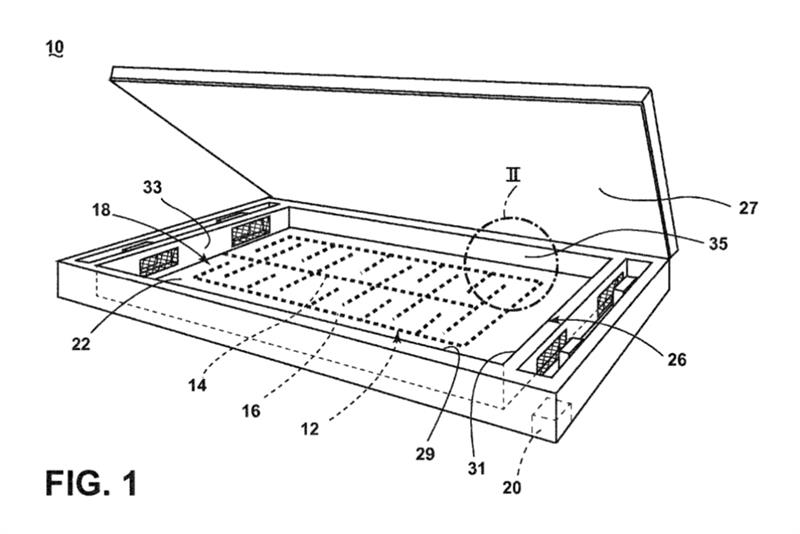Tumble dryers are found in most modern homes nowadays. However, they can be bulky and take up considerable floor space. With the current movement towards micro living and the ongoing housing crisis in Britain causing homes to be built on a smaller footprint, there is pressure to reduce the size of all domestic appliances.
The design of conventional tumble dryers is constrained by the need for a drum of a suitable volume in which to hold a quantity of laundry and provide for the movement of the laundry and hot air around the items of clothing as they are tumbled.
To address the problem of white goods taking up too much space, Whirlpool Corporation, has been looking at alternative methods of drying laundry, which could allow the size and shape of such appliances to be altered significantly.
Recently-granted European patent number 2844033 discloses an appliance and various methods for drying wet clothes that do not rely on tumbling them within a drum. Specifically, the patent explains how radio frequencies and a Faraday cage can be utilised as an alternative means of drying laundry.
The patented technology relates to a laundry drying machine (10) with a drying surface (22) on which wet clothes are supported for drying. The drying surface (22) is adjacent to a radio frequency applicator (12) and is enclosed by a Faraday cage (26). Damp laundry is placed on the drying surface and its lid (27) is closed. By generating an e-field in the radio frequency spectrum between anode (14) and cathode (16) elements, it is possible to heat the moisture in the damp laundry with the electromagnetic waves. As the water is heated it evaporates away from the wet laundry, allowing it to dry.
By applying this technology, it is possible to produce an appliance with very different dimensions to a conventional tumble dryer. For example, the appliance could be laid flat, on a work surface, or even positioned vertically, whilst drying laundry.
Interestingly, it seems that this innovation may have been inspired at the outset by a different type of domestic appliance, the microwave oven. The patent discusses how a microwave oven can be used to heat objects but goes on to explain why this technology wouldn’t be suitable for drying wet clothes. In particular, a microwave oven would cause problems for drying certain articles of clothing such as those with metal zippers. Furthermore, a microwave oven tends to provide localised heating, which is typically dealt with by using a turntable to rotate the objects to be heated.
In seeking to improve the tumble dryer, engineers at Whirlpool Corporation, appear to have considered a variety of potentially useful technologies, including those used in popular devices such as microwave ovens, and then tried to modify them to make them suitable for drying laundry. In this case, the company has established that instead of using microwave frequencies, it was possible to use radio frequencies to dry textiles.
At first sight, this appears to be an ingenious invention that has the potential to become the latest space-saving gadget for the home. Despite being inspired by other domestic appliances, the innovator has applied the technology in a novel way and secured a period of commercial exclusivity in which to bring the new product to market.












